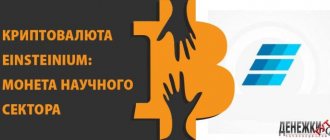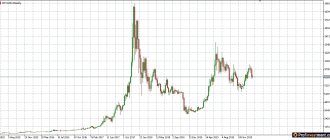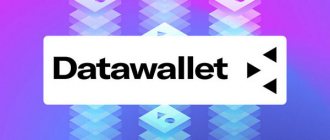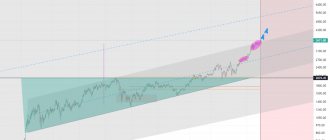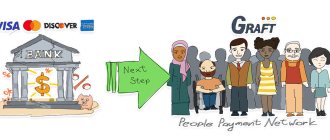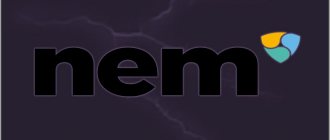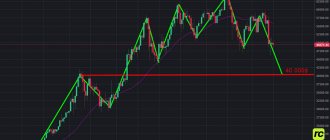NXT (short for English next – “next”) is a cryptographic platform based on a distributed network and designed for creating secure decentralized applications, such as electronic payment systems and trading platforms, instant messengers, etc.
This network uses its own cryptocurrency of the same name NXT , and the stability of the platform is ensured by the Proof-of-Stake .
Blockchain platform NXT
Blockchain is used to create a decentralized ecosystem with a wide range of functions, each of which requires the NXT cryptocurrency . However, instead of modifying the Bitcoin , as many altcoin projects have done, the developers of the NXT cryptographic platform wrote their own Java code from scratch. While NXT is based on a public blockchain, licenses for dedicated private blockchains running on NXT software are also available for purchase. The developers are positioning the NXT platform as Blockchain 2.0, providing many other possible uses beyond simply maintaining a public ledger of transactions.
Production
Users can create requests to mine additional currency units. Each mining request triggers hash calculations based on the submitted data and the currency hashing algorithm. The resulting hash code is compared with a given value derived from the current difficulty. The minimum and maximum difficulty values of a currency and the mining algorithm are specified when the currency is issued and cannot be changed later. The expected number of hash calculations (i.e. difficulty) of mining the first block is 2^minDifficulty, and the difficulty of mining the last currency unit is 2^maxDifficulty. The difficulty increases linearly from min to max based on the ratio between the current number of units and the total. The difficulty increases linearly with the number of units mined per CurrencyMint request, small miners may only receive a few units per request, and large miners may receive a larger number of units per request.
The number of units per mining request is limited to 1/10000 of the total currency supply. Mining is limited to one mining transaction per block/account/currency. Currency issuers can designate an initial number of blocks as “pre-mined” by the issuer's account, and then use crowdfunding to make the currency RESERVABLE and TRADABLE.
Once a currency becomes active, the delta between the current number of coins (reserved) and the total supply can be mined. The NRS client provides a Java-based MINER that can be used for mining. In practice, we expect that users using their ASICs or GPUs will upgrade this MINER to calculate hash codes when finding blocks in order to accept a mining transaction (thus paying a fee).
If the hash code is less than the target, the currency units are credited to the sender's account.
See the documentation for the Mint Worker utility here #207
Decentralized capabilities of the NXT platform
Assets and asset exchange
You can store and trade assets ranging from bonds to movie tickets on the NXT crypto platform.
Monetary system
The currency system allows you to create your own cryptocurrency and immediately begin trading it, either directly on the NXT platform itself or on an exchange that supports the protocol.
Marketplace
You can buy digital goods securely, without the need for intermediaries. After making a purchase, you will receive a link to download the purchased digital product. However, it is not yet clear what legal consequences will be for the sale of illegal goods, since the decentralized principle of the NXT cryptographic platform does not make it possible to remove this product from the general database.
Message exchange
All transactions can contain a message, which is encrypted by default.
Vote
Emphasizes the voting function. This option involves creating an account that requires approval from multiple parties to complete a transaction. This can be useful when participating in organizations such as cooperatives or charities.
Shuffling coins
The process of shuffling coins is designed to provide anonymity, that is, erasing the path from where your coins came. However, the blockchain system is not designed for daily shuffling. Traditionally, “every transaction is visible and traceable.” To use the Coin Shuffle feature, you will need to create a new account and then distribute your funds randomly across multiple user accounts before logging into the new account.
Cloud data storage
Instead of storing data on Google Drive or Dropbox, you can use decentralized cloud storage. The developers believe there are a huge number of documents that users will want to securely upload to their cloud, such as certificates, contracts, wills and licenses.
It's worth noting that the decentralized features listed above must be purchased separately, most of which cost at least 1 NXT.
Available features
The NXT cryptocurrency has a fairly wide functionality that is open to users. Among the available benefits are:
- Asset exchange
Nxt Asset Exchange opens up secure peer-to-peer trading. Through this function you can trade stocks and cryptocurrency assets. Users do not trade “physical” forms of these assets, the platform has its own - special colored coins - they represent ownership, securities, products, as well as ideas and developments.
- Monetary system
Clients have access to the issuance of unique virtual money, which can be shared, traded or exchanged for other currencies supported by the platform.
- Messaging and cloud
Users can exchange both encrypted and regular messages. The system also acts as a "storage" with 1000 bytes of free space available.
- Vote
The system will allow you to create surveys, the results of which are taken into account when making decisions about upcoming events or to collect opinions from shareholders.
- Credential Management
Accounts on the NXT multi-signature platform - control and protection.
go
Issue and stability of the NXT cryptocurrency
Developers released 1 billion NXT coins in 2013 and no new coins will ever be created or mined. To achieve consensus, NXT uses Proof-of-Stake instead of Proof-of-Work . NXT was one of the first cryptocurrencies to rely entirely on Proof-of-Stake.
Although the company continues to develop the NXT project, and NXT cryptocurrency holders even received free Ignis coins at the latest Ardor ICO, it is worth noting that the project may have problems with scalability. One is that even if you create your own tokens or currency on the NXT platform, the transaction fee will still be required in NXT cryptocurrency.
Where to store
To manipulate Nextcoin tokens, the developers have provided a special web application that can be used both locally, installed on a PC, and through available public servers online. Interestingly, when managing coins through a standard browser, the security of transactions is not compromised, due to the fact that the password is not transmitted to the server, and all transactions are signed locally.
How to install a wallet
Let's take a step-by-step look at how to create an NXT wallet using the official utility.
- The first thing you need to do is go to NxtPlatform.org and download the current version of the web application.
- Then (after making sure that Java is available on the device you are using), unpack the utility and run the installation file.
- Next, you need to specify the installation path and mark the necessary parameters.
- After waiting for the installation to complete, launch the NXT server and open the wallet in the browser.
- After selecting the interface language, you will be asked to generate a 12-word password key by the system or specify it yourself. Be sure to save it, otherwise access to your wallet will be irretrievably lost.
- Now the wallet needs to synchronize with the blockchain network.
Having completed the above manipulations and waited for the application to synchronize, you need to top up the NXT cryptocurrency, transfer funds from account to account and check how key access works.
The NXT token can also be stored on exchange wallets, but then the coins will not participate in forging and distribution of rewards for it. On exchanges it is convenient to trade NXT and speculate on price fluctuations, but not to store it.
NXT History
The NXT protocol was released in November 2013 by the anonymous software developer BCNext. The idea was first proposed on bitcointalk.org, collecting only 21 Bitcoins. At that time, Bitcoin was worth about $250. The developer then issued 1 billion NXT cryptocurrency coins and distributed them among 73 investors in proportion to the number of Bitcoins they contributed.
Then the coins became more widespread. As a result, BCNext moved away from the project, and the NXT Foundation was formed to coordinate further development. However, due to a lack of resources and a move away from centralization, the NXT Foundation was unable to effectively manage the project. The NXT platform is currently being developed by Jelurida BV.
Removing a currency
Since currency codes are limited to 3, 4 or 5 capital letters, the total number of codes is limited to 26^3 + 26^4 + 26^5 – 1 = 12355927 unique values (the code "NXT" is reserved), it is likely that some of these codes will valuable in themselves. Therefore, deleting a currency is possible under certain conditions, depending on the type of currency. Users can reissue a currency or delete a currency and then issue a new currency with the same code but different properties. In order to delete or reissue a currency, the account must hold all currencies (additional conditions may apply depending on the type of currency)
NXT Team and Project Progress
Jelurida BV took over the originally anonymously developed NXT project and now owns the intellectual property rights. Kristina Kalcheva, co-founder and lawyer at Jelurida, focuses on how to “explore different open source licensing models and their implementation in practice.” Currently, the lead developer of the NXT crypto platform is an anonymous Star Trek fan who goes by the pseudonym Jean-Luc Picard. The other main developer is Lior Jaffe, often referred to as Riker.
While NXT is actively being developed, Jelurida's parent company is also working on NXT 2.0, known as Ardor, which is designed specifically to address scalability issues. Ardor will use the same blockchain technology as NXT, combined with the idea of "child chains". According to Trevin Keith, web design and marketing manager for the NXT project, Ardor allows "block size control, which solves the scalability problem by separating transactions and data that don't impact security from those that do, and moving all those which do not impact safety on child chains." Jean-Luc and Lior Yaffe are listed as lead developers of Ardor. Despite Ardor's development, Jelurida is still developing NXT, having recently announced its 2018 business strategy on Twitter.
Currency exchange
For the currency being exchanged, each currency holder account can post one exchange offer indicating the buy and sell rate to NXT and the number of units to exchange (which cannot exceed the available number of currency units and NXT balance). Users can observe all currency exchange offers (this is similar to fiat exchangers) and try to match the purchase/sale request. The trade offer has an ending (block) height, as well as a limit on the total number of units that can be traded. When a currency is purchased during an exchange, the number of units for sale increases automatically, and vice versa. The Publisher may also limit the total amount of currency units traded in each offering.
NXT cryptocurrency trading history
Below is a trading chart for the NXT cryptocurrency over the past four years.
Like all coins, the NXT cryptocurrency has experienced big ups and downs. The recent rise in price is most likely due to the release of Ardor and the IGNIS ICO, which raised over $15 million. Developers would like to use the NXT platform to produce even more ICOs in the future. In addition, NXT also provides a new product for creating blockchain. 10% of all tokens created on the new blockchain are automatically distributed to people who own NXT, further incentivizing the purchase of tokens.
Creation of new monetary units
The only way to create new currency units after the currency is issued is through mining. Other methods of creating units are susceptible to attacks and/or sock puppets and are therefore not allowed. The managed currency type provides a partial solution to the creation of new units by allowing the issuer to replenish reserves as in the treasury and treat only units outside of that account as the total currency supply. This approach requires users to trust the issuer, which can increase the supply of currency at any time.
NXT competitors
NXT's main competitor, The New Economy Movement, better known as NEM , was inspired by the NXT system, so these cryptocurrencies have a lot in common. However, due to the initial centralized distribution of coins in NXT, NEM decided not to carry out a hard fork and start with a new codebase.
Obviously, the need for decentralized platforms is quite urgent, since at the time of publication of this article (early 2022), NEM cryptocurrency ranks 7th in total market capitalization.
Mining
In Nextcoin, mining is carried out through a pool, which does not generate capital from nowhere, but takes it from transaction fees. This is due to the fact that the PoS mechanism does not use new funds to maintain the stability of the system. For this reason, the number of NXT coins does not increase over time. It’s not exactly a cryptocurrency, but rather a crypto-platform designed for decentralized services. According to forecasts, Bitcoin will come to such pool technology in about 20 years.
PoW vs PoS
NXT implements mining through the browser. The user opens an account by selecting a special phrase using the appropriate interface. To log into your account, you can use any available web browser - this process is best done through the IP of your own server, although logging in is also possible using any other public server that the client trusts. As a result, one day after opening an account, funds are automatically included in NXT mining.
NXT cryptocurrency forecast
NXT is an innovative and ambitious project that strives to explore and harness the potential of the blockchain as fully as possible. The pseudonym of NXT chief developer Jean-Luc Picard is also quite interesting. The project team, like the Captain of the Enterprise in the cult TV series Star Trek, is trying to “boldly go where no one has gone before!”
Based on a number of analyst opinions, the forecast for the NXT cryptocurrency for 2022 is quite positive. Anyway, with the exciting development of NXT 2.0/Ardor, the new Ignos ICO, upcoming ICOs, and existing decentralized applications, NXT is definitely a coin to watch in 2018.
Exchange rate dynamics
Over 12 months, the average price to the dollar is $0.1948, while the NXT rate jumped from $0.0061 to $0.2009. That is, if it was possible to buy NXT for $10,000 12 months ago, now they could be sold for $326,987.
For an approximate NXT chart of average prices against the dollar and ruble for the fall of 2017, see the table.
| Month | Price in rubles | Price in $ |
| September | 3.86 | 0.07347 |
| October | 3.56 | 0.06487 |
| November | 4 | 0.068765 |
Crowdfunding
A combination of RESERVATION and SHARE properties can be used for crowdfunding; in this configuration, the NXT balance reserved by the founder is not locked, but is sent to the currency issuer's account to activate it. The issuer can use these NXT for its operations and the founder will not be able to reclaim them, but only exchange them based on published exchange offers. Currency issuers can set the initial amount to be 'pre-mined' and the founders will receive a share as opposed to the reserve allocation (also called 'pre-mined') and the initial one.
Currency conversion
Currency is measured in units and, like assets, has decimal values, but the blockchain stores the currency balance as a whole number (QNT). Therefore, for example, in the case of a currency with 2 decimal positions, if the client has 123.45 units, the value of 'units' provided via the API call should be 12345. APIs using NXT balances should send the value measured in NQT as usual. When you specify 'bit' in the API, it calculates the relationship between the NXT balance in NQT and the currency balance in QNT.
Example: For currencies with 2 decimals. When confirming a request to purchase 12.34 units at the rate of 5.6 [NXT/unit] values, in the currencyBuy transaction (purchase of Currency) there should be: units = 1234 i.e. units without a decimal factor or 12.34 * 10^2 courseNQT = 5600000 i.e. the rate is converted to NQT then divided by the decimal position or 5.6 * 10^8 / 10^2
To prevent rounding problems when presenting information to the server, the interface applies the following rule: If the currency has D decimal places. Unit values cannot have more than D decimal places and rate values cannot have more than (8-D) decimal places. That's why
When issuing currency, we do not recommend entering more than 4 decimal digits so that exchange rates are also divisible by 4.
